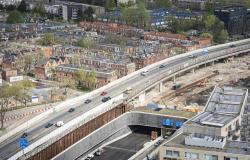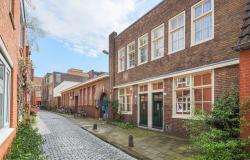Published on April 2, 2024 3:44 PM

A more ecological design of solar parks with rougher vegetation and shrubs is good for biodiversity. This is evident from the first results of a 5-year study that started in 2022, conducted by the University of Groningen, with the province of Groningen and Novar. Not all species benefit from ecologically designed solar parks. Field birds, such as skylarks, stay away.
Last year, researchers mapped the soil, vegetation, insects, mammals and birds at 3 large solar parks in the provinces of Groningen and Drenthe.
Final results
These parks differ in the distances between solar panels and in the decoration of the edge of the park with shrubs or flower strips. The final results of the study are expected to be known at the end of 2027.
Mow
“The first research results show that there is a lot to be gained in the (ecological) management of solar parks. For example, a greater distance between the solar panels, mowing the grass between the rows of panels once or twice and also allowing parts to become rough appear to be good for the biodiversity. For some field birds it is necessary to increase the distance between the solar panels even further or the adjacent area must become more attractive. Furthermore, when constructing a solar park, it is important to prevent compaction of the soil, for example by using lighter machines,” the province said in a press release.
Mice
The research is mainly focused on birds, mice, butterflies and plants. Higher densities of mice and butterflies were observed in the solar parks examined than in nearby agricultural areas. Some bird species also did better. These findings show that solar parks can not only provide sustainable energy, but also benefit nature. “The preliminary results of our research are promising,” says researcher Dr. Raymond Klaassen, project leader of the study. “They challenge the common view that solar parks are harmful to nature. With careful planning and management we can both produce green energy and support nature. The fact that biodiversity benefits from solar parks is also because the initial situation – large-scale fields – little space for nature offers.”
Rougher vegetation and shrubs
“Species that prefer rougher vegetation and shrubs benefit from solar parks. These are the specific habitats that develop abundantly within solar parks, but which are less common in the adjacent arable area,” adds PhD candidate Sylvia de Vries. She is conducting the 5-year study.
Skylarks
“Species do not seem to benefit from open fields; skylarks, for example, stay away. That is also an important result. Now that we know this, we can think about how we can make the construction of parks positive for these species. This will require a more extensive require the establishment of solar parks or, on the contrary, compensatory measures outside the parks.”
Photo: Pixabay.com.








